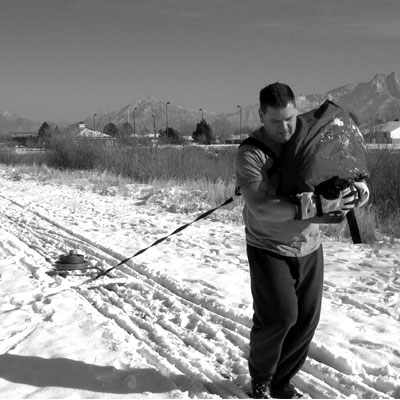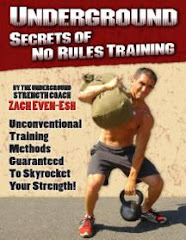
Hanging around a lot of fighters and martial artists, I've noticed that when it comes to their strength and conditioning, most of them are merely doing a lot of guess work. Maybe they're like you and they've read articles online or in magazines, or maybe they got advice from a coach or someone else in their gym. Either way, it seems like everyone has an opinion nowadays as to how fighters should train...and most of them are DEAD WRONG. I could write an entire book on the subject of strength & conditioning for fights, but for the purpose of this article I just want to guide you in the right direction.
First, here's 3 things off the top of my head I've observed
1. Most fighters are OVER TRAINED. In MMA for example, you might train 2 or 3 disciplines in one day, with each coach having their own agenda and their own opinion of how much work you should be doing. I get that and I see that there's not much we can do right now to fix it.
2. Most fighters feel the need to be doing SOME type of daily conditioning work. Read above. The fact is that your skill sessions are going to the most specific conditioning sessions that you can do, and much more than that is over kill.
3. Most fighters just don't have a CLUE as to how to structure their strength & conditioning sessions, monitor volume & intensity, and now when and how much to push or back off. With fighters this is an extremely fine line, more so than any other sport, in my opinion.
So now that we know that you're just plain old doing too much work, its always a safe bet to start with a minimalist approach and then add things if needed or warranted. Remember, you're a fighter first and foremost - strength training is just general work to get you stronger and in better condition so that you can display your skills harder, longer, faster than the other guy.
With that said, here's a sample 2 day program for an MMA fighter who trains 1-2x a day, 5-6 days a week, but still needs to get a little stronger and maintain his or her conditioning. This is a TEMPLATE and not a specific routine, so feel free to play around with different movements...get stronger but HAVE FUN!
Day 1:
- warm up x 2-3 sets
1. push ups x 15
2. band or recline rows x 15-20
3. bodyweight squats x 30
4. reverse lunges x 15 each leg
5. mountain climbers/groiner series x 6 each (ea side)
a) total body movement 4-5x3-5
- sandbag shouldering
- clean and press (sandbag, dumbbell, kettlebell, barbell)
- dumbbell snatches
- dumbbell clean and jerks
- sandbag loading drill
b1) upper body push 3x6-15.
- weighted push ups
- parallel bar dips
- dumbbell pressing (flat, incline, or or overhead)
- barbell floor presses
- hanstand push ups
b2) upper body pull 3x6-15.
- chin ups/pull ups
- weighted recline rows
- barbell rows
- sandbag rows
- dumbbell rows
c) lowerbody (knee extension) 2-3x6-12; but don't be afraid to hit up some super high reps once in awhile in the 20-30 rep range.
- squat variation (barbell, kettlebell, sandbag, zercher, front etc)
- lunge variation (barbell, kettlebell, sandbag, etc)
- step up variation (" ")
- bulgarian split squat variation (" ")
d) posterior chain (hip extension) 2-3x6-12
- romanian deadlifts (barbell or dumbbell)
- glute ham raises
- snatch grip deadlifts
- pull throughs
- sandbag beyond the range pull throughs
- sandbag power cleans
- sandbag good mornings
So there you have it, a sample template to follow 2 days a week. Allow 2-3 days between each workout and keep track of your progress!


























